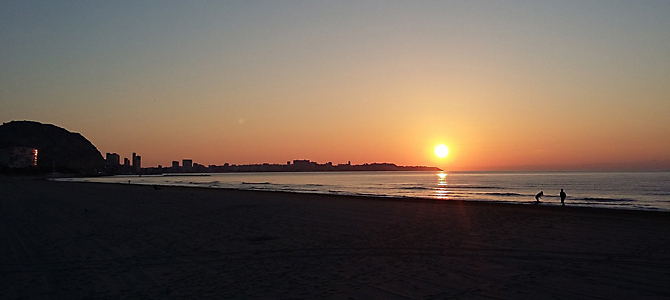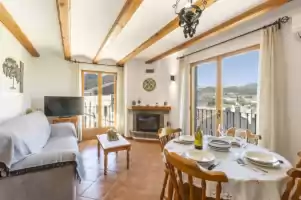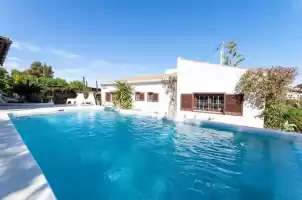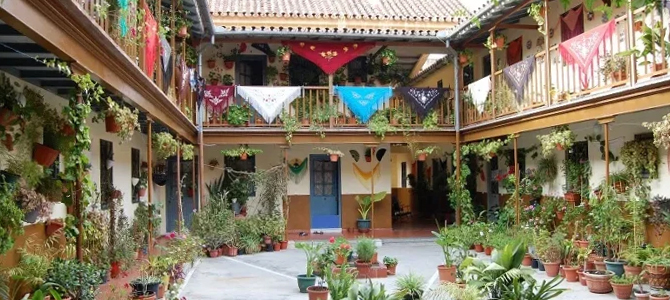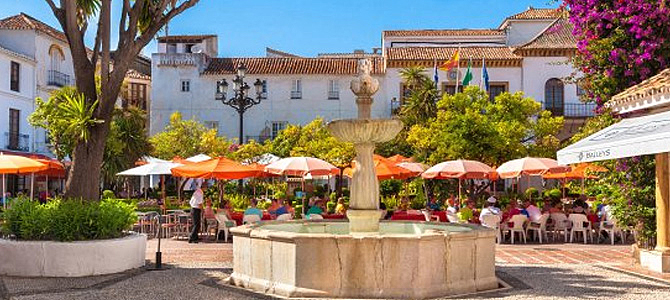The province of Alicante, one of the main tourist destinations thanks to its famous Costa Blanca , offers much more than its busy beaches. If you are planning to stay near the city of Alicante, we recommend you to visit it.
Alicante is a city full of history and culture. Since the Bronze Age, it has been a strategic place thanks to its port and its geographical location. Its past is marked by the influence of various cultures, from the Phoenicians and the Romans to the Arabs and the Christians, leaving a great architectural and cultural legacy.
Its cultural life is wide-ranging, with festivals, events and a rich gastronomic offer that reflects its historical diversity.
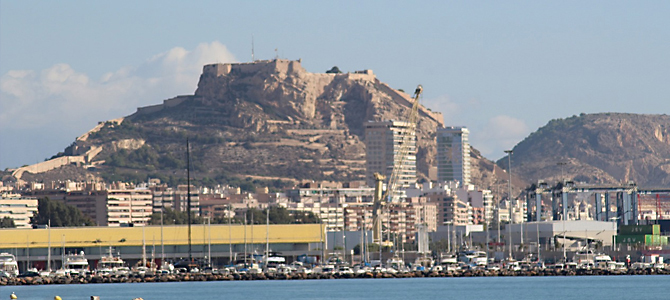
Here are the places you should not miss when visiting this city:
The neighbourhood of Santa Cruz
On the slopes of Mount Benacantil is the picturesque old town of Alicante, known as Santa Cruz.
This charming corner is made up of white houses and narrow streets, inviting visitors to explore the Santa Cruz hermitage and Santa Cruz viewpoint, from where you can enjoy breathtaking views of the town.
Within Alicante’s culinary range, the picturesque neighbourhood of Santa Cruz stands out for its gastronomic variety.
Alicante City Council
Also known as the Municipal Palace of Alicante, it is an impressive 18th century Baroque building located between the Town Hall and Santísima Faz squares.
Guided tours are available on request to explore the Blue Room, the Hall of Mayors, the Plenary Hall and the Oratory Chapel. This building is emblematic and unique, and on the first step is the “Cota Cero”, from where Spain’s altitude above sea level is measured.
During the extension works, remains of the medieval city were discovered and are on display free of charge under the name “Alicante, the discovered city”.
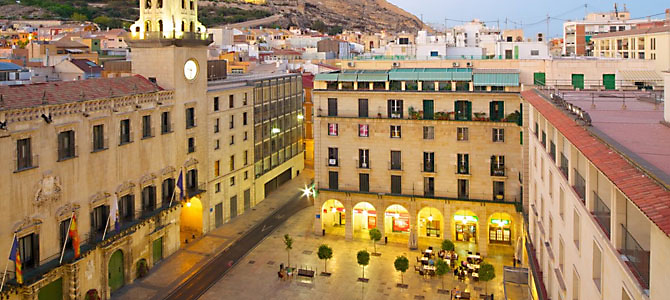
Santa Barbara Castle
In Alicante, a visit to the Castle of Santa Bárbara is a must. Located at the top of the Benacantil mountain, it offers incomparable views of the Mediterranean. Built by Arabs in the 9th century and completed by Christians in the 18th century, it is one of the largest medieval fortresses in Spain.
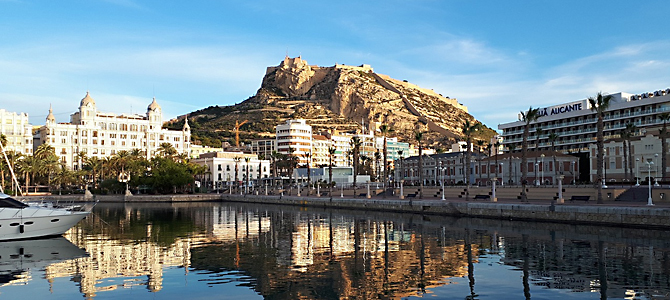
Today, it is used as a venue for exhibitions and events. Entrance is free and climbing up from the Santa Cruz neighbourhood is a unique experience. Watching the sunset from its battlements is a spectacle not to be missed on your visit to the city.
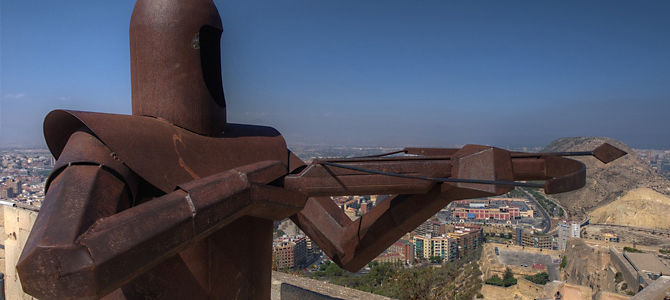
The Esplanade Promenade
The Explanada de España is a popular pedestrian walkway that stretches almost 600 metres from the Puerta del Mar to the Canalejas park, parallel to the port. Its characteristic mosaic floor mimics the waves of the Mediterranean, offering a delightful promenade. The Explanada is also notable for its tall palm trees and the Casa Carbonell, a work of modernist architecture. It also has the municipal auditorium of La Concha and the Canalejas park, the oldest park in Alicante. In terms of leisure, it offers a variety of bars, restaurants and craft stalls.
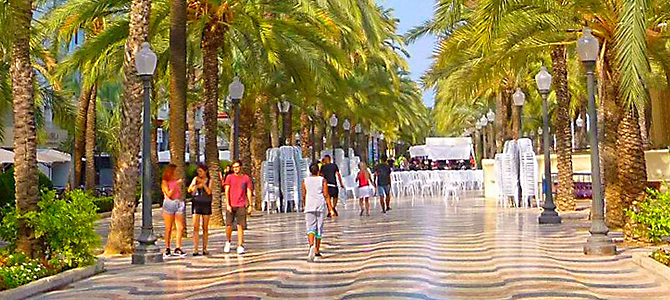
The port of Alicante
Although fishing activity has declined in Alicante, its marina is still a popular spot for pleasure craft.
Exploring the port of Alicante is an enriching experience. Strolling along its quays and visiting its leisure area gives a clear idea of the city’s maritime life.
Don’t miss the statue of Icarus, which adorns the port and symbolises the adventurous and daring spirit of sailors.
Without a doubt, the port is one of the most popular destinations for visitors to Alicante, attracting tourists and locals alike.
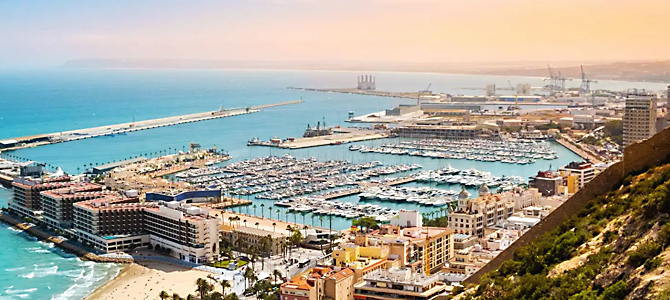
Postiguet Beach
The Postiguet urban beach, located near the old town and at the foot of Santa Barbara Castle, is one of the best urban beaches in Spain. Although it is the most crowded in Alicante, its wide extension makes it an ideal destination to enjoy.
It also offers services adapted for the disabled, including a recreational-pedagogical area for people with mental disabilities.
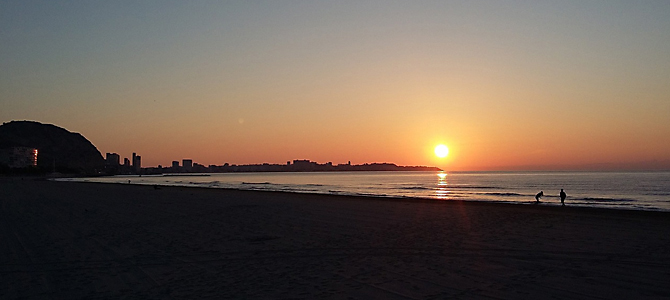
The Co-cathedral of St. Nicholas
Built on the site of an old mosque, in the Renaissance Herrerian style, it is very austere and has no ornaments, which gives it a solemn appearance on the outside. It is a place worth visiting for its particular atmosphere and the tranquillity it conveys.
The Central Market
It is an eclectic style building and was built between 1915 and 1921.
It was built in brick and is distributed over two rectangular floors, with both its main façade (which overlooks the Avenida de Alfonso el Sabio) and the so-called Rotonda, located on one of the sides of this façade with a semi-spherical roof, standing out.
It has stalls selling fish, meat, fruit, cheese, sweets and gourmet products. Apart from being a great market to buy quality products, it has some restaurants inside.
The Archaeological Museum of Alicante (MARQ)
The museum adopts an avant-garde approach to archaeology, supported by modern audiovisual techniques, offering an innovative and visual experience. Its exhibition ranges from the Palaeolithic to Modern Contemporary Culture, providing a journey through the history of Alicante. The Museum offers the possibility of learning about the archaeological method. In three rooms, the Field Archaeology Room, the Urban Archaeology Room and the Underwater Archaeology Room.
The Alicante Bullring
The Alicante Bullring, one of the oldest in the Valencia Region, houses the Alicante Bullfighting Museum. Built in 1847 by the architect Emilio Jover, it was renovated in 1884 due to its deterioration. Its size and large capacity reflect the importance of bullfighting in Alicante in the 19th and 20th centuries.
To explore Alicante’s most emblematic places is to discover a rich history, as well as monuments that reveal a vibrant past, influenced by the Mediterranean Sea. We encourage you to discover this city and stay in one of our nearby houses.

